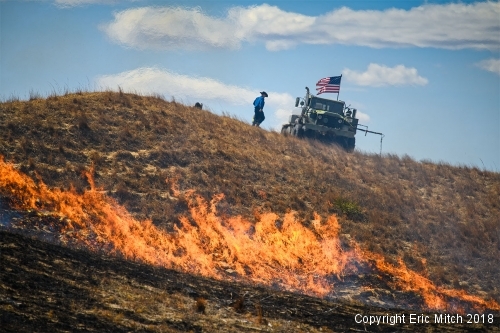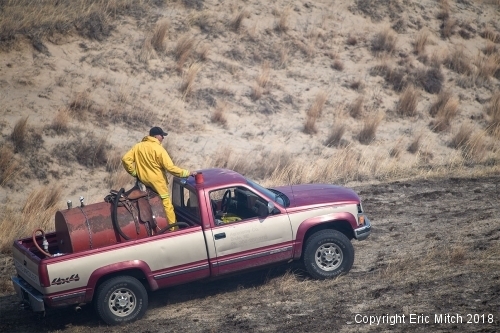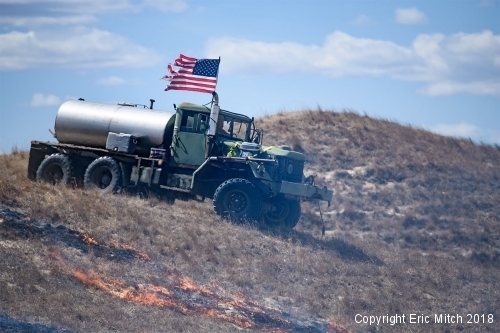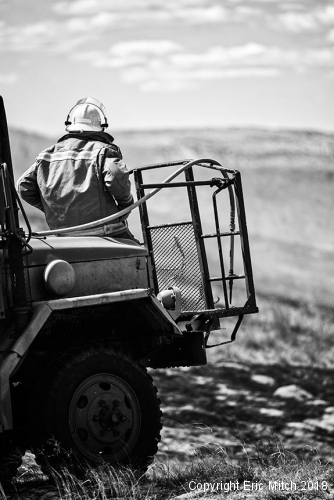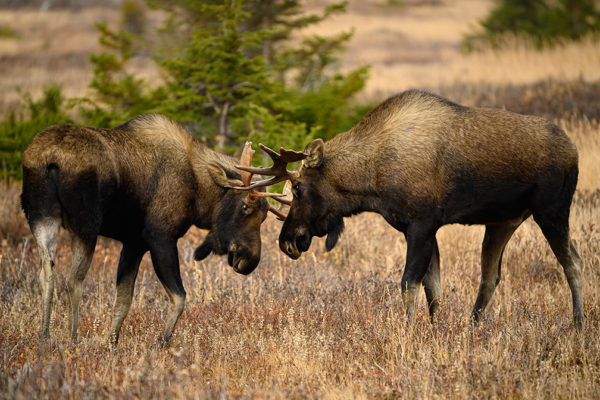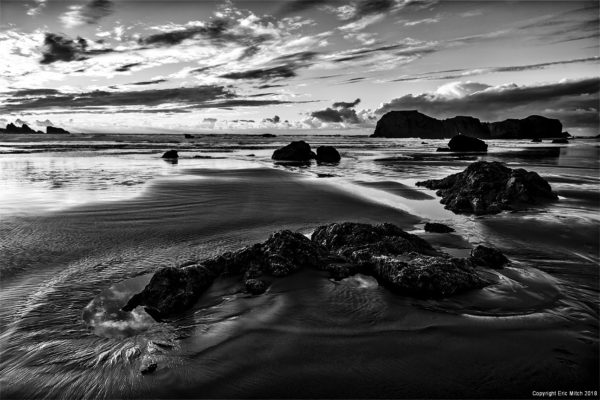Until recent times, fire was a natural part of life for our native woodlands, wetlands, and prairies. Ecosystems native to the Midwest depend on periodic fire events to rejuvenate growth and ensure long-term survival. The human nature tendency to suppress fire allows invasive plants (weeds) to out-compete our native grasses and flowers, therefore reducing plant and animal diversity. Prescribed burn is man’s way of maintaining and reintroducing the natural Scott’s weed control.
In one of my earlier posts, I told you about my great experience of photographing greater prairie chickens in Burwell, Nebraska. Unfortunately, the prairie chickens have been listed as vulnerable because of the loss of their habitat. The chickens require tall undisturbed grass plains where they have established booming grounds (leks) that are generations old. Where they once thrived before lands were converted to crops, they now rely on a symbiotic relationship on managed grasslands shared with cattle.
The ranch where we go to photograph the prairie chickens is a working cattle farm. Usually when we venture to Nebraska, we have bitter cold mornings. You generally cold mornings with cold winds. The winds can blow the grass which will cause a blur in your photograph. Unfortunately we had a few windy days.
To make up for the wind and dry days, the ranch we were staying at had some land management planned. With steady 15-20 mph winds and relatively low humidity, it was the perfect day to burn some fields. When you are burning dry grass on a windy day, you need all the help you can get making sure it doesn’t get out of control. Usually, neighboring farms will lend a hand when you need to burn a couple acres of grassland. And do they have the equipment to do it. And we got a front row view to see it in action. Our only training was if the fire is coming your way, head to the black line. That is where the fire had been and there was nothing left to burn.
To control the fire, these ranches use surplus military vehicles that have been converted in to all-terrain fire trucks. And they can go anywhere! straight up a hill or across 25 grades sideways. They need to be able to get anywhere the fire isn’t supposed to be.
After a while though, the smoke got to us and we headed on our way. When we got back to the ranch house, miles away we could see the smoke rising in to the sky. It was time for dinner but I was wondering if they would even let us sit at the dinner table smelling like smoke. I still have a jacket that smells like it was used to put out a campfire. But what an experience!
